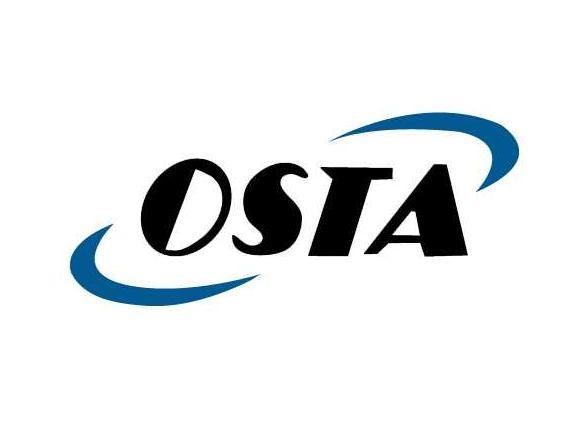2017年全国硕士研究生统一入学考试英语二真题及答案(新题型)
Part B
Directions:
Read the following text and match each of the numbered items in the left column
to its corresponding information in the right column. There are two extra choices
in the right column. Mark your answers on the ANSWER SHEET. (10 points)
The decline in American manufacturing is a common refrain, particularly from
Donald Trump. "We don't make anything anymore," he told Fox News, while
defending his own made-in-Mexico clothing line.
Without question, manufacturing has taken a significant hit during recent
decades, and further trade deals raise questions about whether new shocks could hit
manufacturing.
But there is also a different way to look at the data.
Across the country, factory owners are now grappling with a new challenge:
instead of having too many workers, they may end up with too few. Despite trade
competition and outsourcing, American manufacturing still needs to replace tens of
thousands of retiring boomers every years. Millennials may not be that interested in
taking their place, other industries are recruiting them with similar or better pay.
For factory owners, it all adds up to stiff competition for workers-and upward
pressure on wages. "They're harder to find and they have job offers," says Jay
Dunwell, president of Wolverine Coil Spring, a family-owned firm, "They may be
coming [into the workforce], but they've been plucked by other industries that are also
doing an well as manufacturing," Mr. Dunwell has begun bringing high school juniors
to the factory so they can get exposed to its culture.
At RoMan Manufacturing, a maker of electrical transformers and welding
equipment that his father cofounded in 1980, Robert Roth keep a close eye on the age
of his nearly 200 workers, five are retiring this year. Mr. Roth has three
community-college students enrolled in a work-placement program, with a starting
wage of $13 an hour that rises to $17 after two years.
At a worktable inside the transformer plant, young Jason Stenquist looks
flustered by the copper coils he's trying to assemble and the arrival of two visitors. It's
his first week on the job. Asked about his choice of career, he says at high school he
considered medical school before switching to electrical engineering. "I love working
with tools. I love creating." he says.
But to win over these young workers, manufacturers have to clear another major
hurdle: parents, who lived through the worst US economic downturn since the Great
Depression, telling them to avoid the factory. Millennials "remember their father and
mother both were laid off. They blame it on the manufacturing recession," says Birgit
Klohs, chief executive of The Right Place, a business development agency for western Michigan.
These concerns aren't misplaced: Employment in manufacturing has fallen from
These concerns aren't misplaced: Employment in manufacturing has fallen from
7 million in 1970 to 12 million in 2013. When the recovery began, worker shortages
first appeared in the high-skilled trades. Now shortages are appearing at the mid-skill
levels."The gap is between the jobs that take to skills and those that require a lot of
skill," says Rob Spohr, a business professor at Montcalm Community College.
There're enough people to fill the jobs at McDonalds and other places where you
"don't need to have much skill. It's that gap in between, and that's where the problem
is."Julie Parks of Grand Rapids Community points to another key to luring
Millennials into manufacturing: a work/life balance. While their parents were content
to work long hours, young people value flexibility. "Overtime is not attractive to this
generation. They really want to live their lives," she says.
41。 Jay Deuwell
42。 Jason Stenquist
43。 Birgit Klohs
44。 Rob Spohr45.Julie Parks
[A] says that he switched to electrical
engineering because he loves working with
tools。
[B] points out that there are enough people to fill the
jobs that don’t need much skill。
[C] points out that the US doesn’t manufacture
anything anymore。
[D] believes that it is important to keep a close eye
on the age of his workers。
[E] says that for factory owners,workers are harder
to find because of stiff competition。
[F] points out that a work/life balance can attract
young people into manufacturing。
[G] says that the manufacturing recession is to
blame for the lay-off the young people’s parents。
1.根据题干人名 Jay 定位文中“They’re harder to find and they have job offers,”他
们很难发现他们有工作邀请。harder 对应选项 stiff(艰难地)
2.根 据 题 干 人 名 Jason Stenquist 对 应 文 中 “I love working with tools. I love
creating,” he says.我爱与工具打交道,我喜欢创新,tool 对应选项 tool
3.根据题干人名 Birgit Klohs,定位文中“remember their father and mother both
were laid off. They blame it on the manufacturing recession,”记住他们的爸爸妈妈都
下岗了,他们归因于生产萧条。文中 blame 对应选项 blame
4.根据人名 Rob Spohr,对应文中 The gap is between the jobs that take no skills and
those that require a lot of skill,” says Rob Spohr, 工作之间的差距是那个不需要技
能,而那些需要很多技能。文中 skill 对应选项 skill(技能)
5.题 干 问 Julie 的 观 点 , 对 应 文 中 “We’ve never had so much attention from
manufacturers.”我从没有得到过这么多来自制造商的注意,attraction 对应选项
attract(吸引)
 一帆教育微信官方公众号
一帆教育微信官方公众号




























